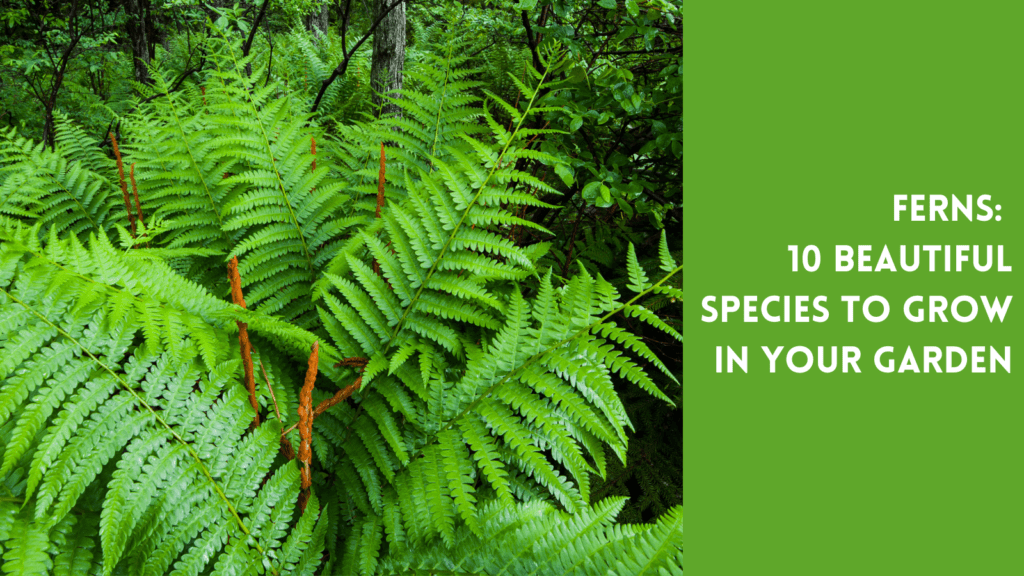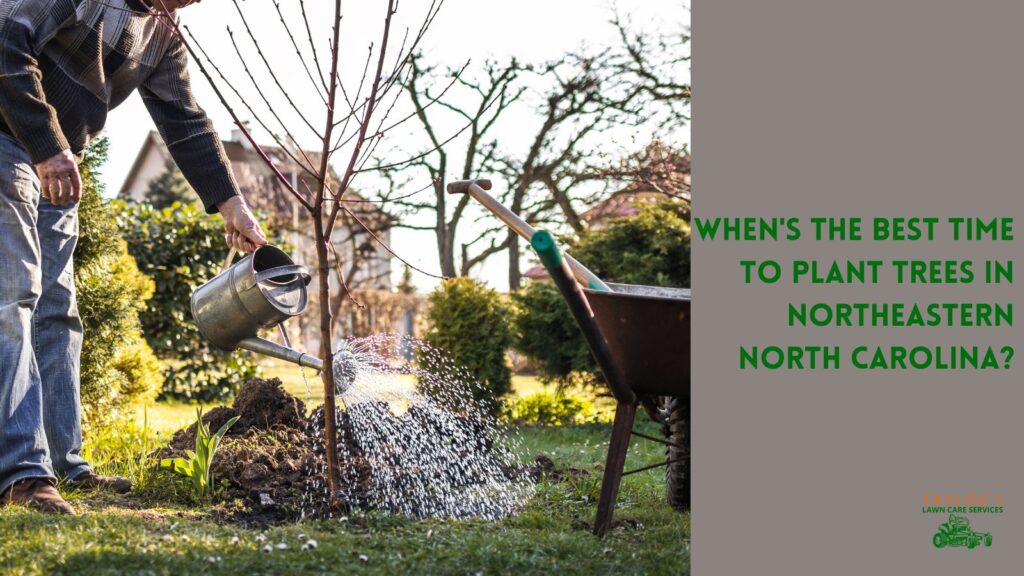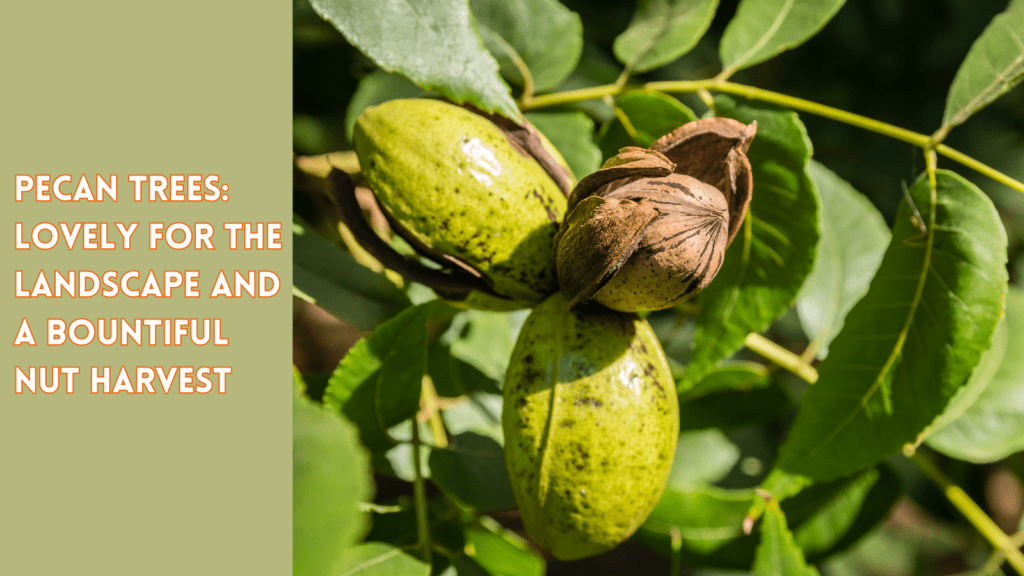Last Updated on: 15th October 2023, 10:52 pm
Here’s what you need to know about Polystichum acrostichoides.
A certain magical charm comes with the changing seasons in North Carolina, especially for our clients in zones 7 and 8. Among the rich tapestry of flora that graces our gardens, one perennial stands out with its unfading beauty throughout the year: the Christmas Fern (Latin: Polystichum acrostichoides).
Here’s everything you need to know about this elegant evergreen.
Describing the Beautiful Good Looks of the Christmas Fern
When one first encounters the Christmas Fern, the striking, vibrant green of its fronds demands immediate attention. But upon closer inspection, the fern reveals a depth of complexity, making it a favored choice for many garden enthusiasts.
A broad palette of greenery:
The Christmas Fern isn’t just green. Its fronds display a range of hues, from a deep, rich forest green at the base transitioning to a brighter, almost luminescent green at the tips. This gradient gives the plant a dynamic appearance, ensuring it stands out even among other evergreens.

Fronds and their finesse:
Each frond is a masterpiece of nature and measures 12 to 18 inches long. They arch gracefully, beginning erect. But they curve to a soft bend as they lengthen, resembling a cascading fountain of green. Their leathery texture gives them resilience against the elements and adds a tactile element to the garden.
Lance-shaped leaflets:
It’s the more minor details of Polystichum acrostichoides that truly captivate. Each frond comprises a series of lance-shaped leaflets, symmetrically spaced and arranged.
These leaflets, or pinnae, start smaller at the base, growing more extensive in the center of the frond and then reducing in size again towards the tip, giving the frond a tapered appearance. This symmetrical pattern and shape provide an almost rhythmic beauty to the fern.
Stalk and stature:
Beneath the lush greenery, the Christmas Fern’s stalk, or stipe, is a robust brownish-black, providing a solid contrast to its vibrant fronds. This contrast adds another layer of visual depth, ensuring the fern remains a focal point, regardless of its garden neighbors.
When the Christmas Fern reaches its mature height of approximately two feet, its true majesty reveals its true beauty. With a width mirroring its height, it forms a dense, rounded mound of cascading green, making it a statement piece in any landscape.
The Polystichum acrostichoides fern is not just another plant. Instead, it’s a symphony of shapes, textures, and colors, harmoniously blending to bring year-round splendor to gardens. Whether it’s the heart of winter or the peak of summer, this fern remains a testament to nature’s artistry.
Ideal Growing Conditions for the Christmas Fern
Soil type and pH:
Christmas Ferns thrive in well-draining soil, preferring humus-rich and slightly acidic conditions. A pH level of 5.0 to 7.0 is ideal. If unsure about your soil’s pH, consider getting a soil test which will provide valuable information to optimize plant health.
Christmas fern watering needs:
While Polystichum acrostichoides appreciates consistent moisture, it’s also quite drought-tolerant once established. Water regularly, especially during dry periods, but ensure the soil doesn’t remain soggy, which can lead to root rot.
Sunlight requirements:
Partial to full shade is where the Christmas Fern shines. While it can tolerate some morning sunlight, protecting it from the harsh afternoon rays will help maintain its lustrous green hue.

Christmas Fern Planting Guide
Here are the basics of planting.
When to plant:
The best time to introduce the Christmas Fern to your garden is during the cooler months of spring or early fall. That allows the fern ample time to establish its root system before the onset of harsher temperatures.
How to plant:
1. Choose a suitable location with the right sunlight conditions.
2. Dig a hole twice as wide as the fern’s root ball and of the same depth.
3. Gently remove the fern from its container, ensuring you don’t damage the roots.
4. Place the fern in the hole, ensuring the top of the root ball is level with the soil surface.
5. Fill in the hole with soil, firming it gently as you go.
6. Water thoroughly after planting.
Maintaining the Christmas Fern is relatively straightforward:
- Mulch around the base of the fern to conserve moisture and regulate soil temperature.
- During prolonged dry spells, water the fern deeply to ensure it remains hydrated.
- Though not necessary, consider a balanced, slow-release fertilizer during spring to promote vigorous growth.
The Evergreen Benefits of the Christmas Fern
- Aesthetic appeal: The rich green foliage brings life to barren winter landscapes.
- Erosion Control: The Christmas Fern’s robust root system helps prevent soil erosion, especially on slopes.
- Wildlife Attraction: Many native species, like the caterpillar stage of some moths, find refuge and sustenance amidst the fronds.
- Air Purification: Ferns, including Polystichum acrostichoides, are known to absorb pollutants from the air, acting as natural air purifiers. You’re taking a step towards healthier air quality by including them in your garden or indoor spaces.
- Low Maintenance: The Christmas Fern’s hardiness requires minimal care compared to other garden plants. This easy-going nature makes it an excellent choice for seasoned gardeners and beginners looking for an easy-to-care-for plant that offers year-round beauty.
- Thermal Insulation: Planting a dense collection of Christmas Ferns near homes or other structures can provide a natural insulation barrier. During summer, they shield against excessive heat; in winter, they help trap warmth, potentially leading to energy savings.
From the brilliance they bring to landscapes to the environmental advantages they offer, the Christmas Fern’s benefits make it both an aesthetic choice and a holistic one. As you ponder upon your next garden addition, remember that the Polystichum acrostichoides brings a cascade of gifts for every season.
Christmas Fern: A Hardy and Resilient Species
The true marvel of the Christmas Fern lies in its resilience. While many plants may falter in the face of winter’s chill, this fern stands tall and unyielding. Rated for USDA zones 3-9, it showcases unparalleled hardiness, braving the cold winters with unwavering grace.

The Takeaway: Christmas Ferns Offer Year-Round Greenery and Are Easy to Grow and Maintain
The Christmas Fern is a steadfast green constant in zones 7 and 8 of North Carolina, where seasons paint landscapes with varying shades. This fern offers year-round beauty, ease of care, and resilience and is a magnificent addition to any garden.
For more planting advice and lawn care tips or to explore other plants ideal for your region, contact Tayloe’s Lawn Care Services experts – 252.287.3375. Your dream garden is just a fern away!
Author Profile

- Deborah Tayloe is the CEO and co-founder of Tayloe's Lawn Care Services, LLC. She has a B.S.Ed and holds certificates in soil and water management and herbology from accredited programs.
Latest entries
 GardeningSeptember 27, 2025What perennials, shrubs, and trees don’t like fall pruning (and why)?
GardeningSeptember 27, 2025What perennials, shrubs, and trees don’t like fall pruning (and why)? Trees and ShrubsSeptember 14, 2025Fall Shrub Pruning Guide (September–October)
Trees and ShrubsSeptember 14, 2025Fall Shrub Pruning Guide (September–October) Trees and ShrubsApril 22, 2025Boxwood Blight: Early identification and isolation
Trees and ShrubsApril 22, 2025Boxwood Blight: Early identification and isolation Flower GardenApril 8, 2025John F. Kennedy Rose: Hybrid tea rose with elegant white blooms
Flower GardenApril 8, 2025John F. Kennedy Rose: Hybrid tea rose with elegant white blooms






